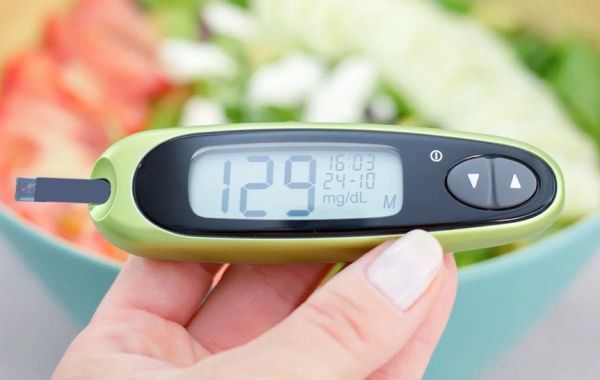Hello, strong and resilient ladies! In our fast-paced and demanding world, whether you are an active mother, independent corporate leader, or a working woman, health often takes a backseat. Today, we’re here to discuss a topic that cannot be neglected: your glucose levels, specifically the spikes, and their impact on your physical appearance and weight.
According to Janice Hermann’s research, excess glucose that is not used for immediate energy is converted into glycogen or fat, leading to storage in body fat cells and contributing to weight gain.
So this explains how glucose spikes can affect your energy, mood, weight, and overall well-being. As we juggle careers, family, and self-care, the influence of hormones on our health journey is crucial. This is why it is imperative to acknowledge every factor contributing to glucose spikes. By doing so, we can manage them better to enhance our vitality and empower ourselves to age gracefully while living life to the fullest. Let’s get started, shall we?
So ladies, before getting into details we know what hormones are, they are chemical messengers in our bodies that help control many important functions, including how we manage sugar. They play a big role in our overall health, especially when it comes to glucose spikes.
Do you know what glucose spikes are? Let us give you a brief introduction to what glucose spikes are and how dangerous they can be. For more details, head over to our YouTube channel to learn about glucose spikes.
Glucose spike
Glucose spikes happen when your blood sugar levels rise quickly after eating, especially after meals high in carbohydrates. For women, factors like hormonal changes can affect how these spikes occur, making it important to pay attention to your body’s signals.
Keeping your body in check is super important because frequent glucose spikes can lead to various health issues. Here's a simple guide to blood sugar levels:
- Before eating: Normal blood sugar should be between 70-90 mg/dL.
- After eating: It should ideally be 140 mg/dL or less.
After eating, your blood sugar should not go up by more than 30 mg/dL. If it does (like going from 90 mg/dL to over 170 mg/dL), this is called a "glucose spike," which may mean your body isn’t managing blood sugar well. These spikes then may contribute to insulin resistance, increasing the risk of developing type 2 diabetes. Plus, they can leave you feeling tired, irritable, or even lead to headaches. Long-term, they can also affect your heart health and nerve function.
Signs your glucose might be spiking
It's helpful to know what to look for. If you experience increased thirst, frequent urination, fatigue, or mood swings after meals, those could be signs of a spike.
One effective way to monitor your blood sugar is by using a glucose meter, which can give you quick feedback after meals. Another option is a continuous glucose monitor (CGM), which tracks your levels in real time, helping you spot trends and spikes more easily.
Key hormones playing a major role in influencing glucose spikes
Other than a sedentary lifestyle, your essential key hormones impact your health and are linked to glucose spikes as well:
- Insulin: This hormone helps lower blood sugar by moving glucose into cells for energy. For example, high insulin levels can lead to increased body weight as excess glucose is stored as fat.
- Glucagon: Glucagon raises blood sugar levels when they drop too low, helping to release stored glucose for energy. For instance, when you skip a meal, glucagon ensures you have enough energy to function.
- Adrenaline: Adrenaline is released during exciting moments, like bungee jumping or racing, boosting blood sugar for quick energy. However, frequent adrenaline spikes can lead to repeated glucose spikes, impacting overall health.
- Cortisol: Cortisol is released during stress and can raise blood sugar levels. For example, chronic stress can cause weight gain around the abdomen due to consistently high cortisol levels. Luckily we have a whole series on cortisol for women’s health, click here to be informed!
Insulin relation with glycation and ageing:
Ladies, insulin is a vital hormone that regulates blood sugar levels, but if it remains consistently high, it can lead to glycation. So, what exactly is glycation, and why should we care?
Glycation occurs when sugar molecules bind to proteins or fats in our bodies without enzymatic assistance, resulting in harmful compounds called advanced glycation end-products (AGEs). Insulin significantly influences this process. When insulin levels remain high due to frequent glucose spikes, the risk of glycation increases, which can accelerate ageing.
Over time, these harmful compounds accumulate and are linked to various age-related diseases. Glycation can damage collagen and elastin, leading to wrinkles and sagging skin, making us appear older. Also, it can impair organ function, particularly in the kidneys and heart, and trigger inflammation, worsening conditions like arthritis and cardiovascular disease.
Understanding glycation and its effects is essential for maintaining our health and vitality as we age. By managing insulin levels and blood sugar, we can reduce the risk of glycation and promote healthier ageing.
Are you confused about Glycation and Aging? Let’s make it simple
We know you might be a bit confused by now, so let’s clarify the differences between glycation and ageing. Here’s a concise chart to highlight the key distinctions:
Tips for healthy ageing and preventing glycation
- Eat a low-glycemic diet: Focus on whole, unprocessed foods with a low glycemic index to prevent blood sugar spikes. To manage blood sugar, ensure to eat in the correct order, for instance; 1. Start with vegetables (e.g., leafy greens), 2. Then add proteins (like chicken or fish), 3. Then healthy fats (avocado, olive oil), and 4. Finish with carbs (rice, bread). Click here for a detailed video on managing blood sugar.
- Exercise: Incorporate Cardio, mobility, and strength training exercises to improve insulin sensitivity and maintain stable blood sugar levels.
- Manage stress: Practice stress-reduction techniques like yoga, meditation, or deep breathing to lower cortisol levels, which can contribute to insulin resistance. Click here to check out our cortisol series for more clarity.
- Get quality sleep: Aim for 7-9 hours of restful sleep each night to help regulate hormones and support overall health.
- Limit sugar: Reduce consumption of added sugars, unnecessary snacks, and processed foods to minimize glucose spikes and lower the risk of glycation.
- Incorporate antioxidant-rich foods: Consume foods high in antioxidants, such as berries, dark leafy greens, and nuts, to combat oxidative stress and reduce the formation of AGEs.
- Address hormonal imbalances: Conditions like insulin resistance or PCOS can disrupt blood sugar regulation. Follow a balanced routine of eating, sleeping, and resting to keep hormones in check.
By following these tips, you can support healthy ageing and reduce the impact of glycation on your body, ultimately enhancing your overall well-being.
Conclusion
Managing glucose spikes is vital for healthy ageing and maintaining hormonal balance. If you want to learn about hormonal imbalance and its impact on women, click here.
By understanding how glucose affects the body and taking proactive steps to stabilize blood sugar levels, you can reduce the risk of glycation and its associated negative health effects.
That’s it for today, follow Lady Fitness for more insights! We’ve been posting videos to help you make the most of your health journey.
If you want to learn more about the relationship between glucose spikes and diabetes, let us know in the comments below! We’ll be back with another blog shortly.
Let’s empower each other!







